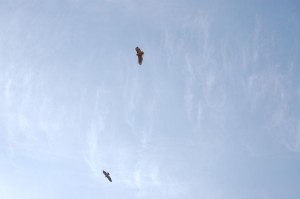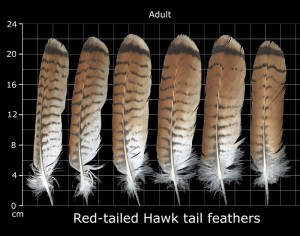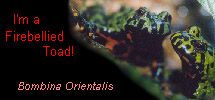
SWALLOWTAILS
In addition to the giant swallowtail, two others frequent local gardens. Named for the tiger-like stripes on their yellow wings, Western Tiger Swallowtail (Papilio rutulus) will drink from a variety of plants commonly found at nurseries, including lantana and aster family plants such as zinnia. Eisenstein grows native seaside daisy (Erigeron glaucus) and a variety of sunflowers. These swallowtails deposit their eggs primarily on sycamore trees, but they also use poplars, cottonwood, willows and alders.
The anise swallowtail (Papilio zelicaon) is also abundant here, because exotic sweet fennel (Foeniculum vulgare) has become a roadside weed and wildland invader. Skip the fennel; attract it with native plants from the carrot family.
COMMON BUCKEYE
Despite the name, these small brown butterflies are uncommonly lovely. Their wings are adorned with large eye-like spots in a kaleidoscope of blues, yellows, pinks, orange and black. “One of the reasons buckeyes are still relatively common in Southern California is because their caterpillars eat members of the snapdragon family,” says Karner. He adds, don’t panic if your snapdragons get chewed up. The plants will rebound—perhaps growing even more vigorously—and know that “you’re going to get some nice butterflies out of the deal.” Eisenstein’s garden features another buckeye host plant—native monkey flower (mimulus species).
LADIES
Painted lady (Vanessa cardui) is sometimes called the cosmopolitan because it’s thought to be the most widespread butterfly globally. This small orange and black insect migrates into Southern California from Mexico in late winter/spring. It’s the one school kids rear in classrooms. Among the plants that host its young are lupines, mallows—even a vacant-lot plant called cheese weed--and thistles. Native and exotic mallows are easy to grow. Lupines provide a gorgeous blue accent in a native plant garden; they are nature’s complement to orange poppies.
Resident West Coast ladies (Vanessa annabella) will frequent the same plants. Both species sip from sunflowers and buckwheats (Eriogonum species). Eisenstein grows California buckwheat. It sports little orbs of creamy white-to-pinkish flowers that dry to a rust color.
CLOUDLESS SULPHUR
This pretty pale yellow butterfly has become rare in recent years. It depends on native cassia and senna plants. The exotic ones found in conventional nurseries don’t do the trick, according to Karner. So ask your local nursery to order the natives, or visit the Theodore Payne Foundation in Sun Valley or Rancho Santa Ana Botanic Garden.
MONARCH
These charismatic orange and black butterflies only deposit their eggs on milkweed plants. The black, yellow and white-striped caterpillars nurse on the plants’ alkaloid sap, which makes them toxic to predators. Exotic milkweeds are readily available, but some research suggests they leave the butterflies more vulnerable to parasites than the natives do. A good source for milkweed seed is Butterfly Encounters.com.
When positioning milkweeds, keep in mind that some are not beauties, and the voracious caterpillars will defoliate them. It’s the butterflies that dazzle.
GULF FRITILLARY
This pumpkin-colored butterfly, with black and silver accents, is native to Mexico and the Southeastern U.S. The grey caterpillars brandish horizontal orange stripes and black spines. The insect moved into coastal California when its host plants—passion vines—became popular in gardens. Avoid blue crown passion flower (Passiflora caerulea): it’s a weedy plant that can escape gardens and damage wildlands.



















